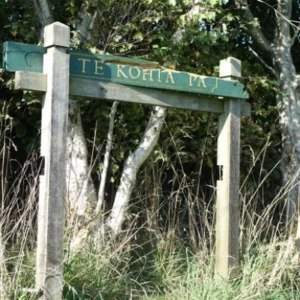The Primary Sources
Researching the New Zealand Wars is so much easier these days because important primary source material is being posted on line.
An important part of researching and writing about the New Zealand Wars (or history in general) is to read and research documents, referred to as the primary evidence. Reading documents can be quite time-consuming and challenging, but referring to the primary materials is an essential part of learning how to research and write history.
Most of the Government documents relating to the New Zealand Wars are now readily available, ever since valuable repositories like The Appendices of the Journals of the House of Representatives (AJHR) and the New Zealand Parliamentary Debates (NZPD) have been uploaded on line. For research and study purposes, these two important sources provide a huge array of detailed information.
The Appendices of the Journals of the House of Representatives – most official government papers since 1858 are bound into these annual volumes. You can research and write about many aspects of the New Zealand Wars by looking through these papers. Listed below are some of the major events of research interest, pertaining to the wars, with references to some of these relevant documents.
1 The origins of war in Taranaki, which broke out at Waitara in 1860.
Below is a reference to a collection of papers published in the AJHR which deal with the origins of war breaking out in Waitara. This is a very long file of papers, and they do take some reading and digesting. But they are interesting and are essential to research / writing / understanding some of the issues that preceded the North Taranaki War 1860-1861. If you find the text too small to read, just place you cursor on the document and right-click once, this should increase the document size.
1a) Papers on the Taranaki Question 1839-1859 Pages 1-20:
1b) Papers on the Taranaki Question 1839-1859, Pages 20-33:
https://paperspast.natlib.govt.nz/parliamentary/AJHR1860-I.2.1.6.5/1
1c) Further Papers on the Taranaki Question 1839-1859.
Further Primary sources: Māori Census data
Here is a good example : the 1874 Māori Census returns. This was the first official census ever undertaken to count the Māori population. It was only possible because the wars had finished in 1872. However, it’s interesting because it reveals the state of Māori after the wars, though do be aware, the data was largely based on estimates (hence the title ‘Approximate Census .. ‘)
The reference for this source is: ‘Approximate Census of the Māori Population’, Appendices of the House of Representatives, 1874, G.-7, pp. 1-20.
Some of the issues / problems in dealing with census data as a primary source are discussed in a journal article written by Danny in 1995 entitled ‘Incontravertible Fact, Nothwithstanding Estimates : Maori People Observed in the Early Contact Period‘. This article appeared in He Pukenga Korero, Koanga (Spring), 1995, Vol.1, pp. 54-64. He Pukenga Korero is the journal published by Māori Studies, Massey University.
Research focus: Land Confiscations
Alternatively, you can directly access the legislation that gave rise to the iniquitous confiscations of Māori land after 1863 : the New Zealand Settlements Act 1863. This legislation was enacted on 3 December 1863 and, originally aimed at Waikato Māori, eventually extended across significant portions of the North Island – see Map of Confiscations, which appears on the awesome Te Ara website.
